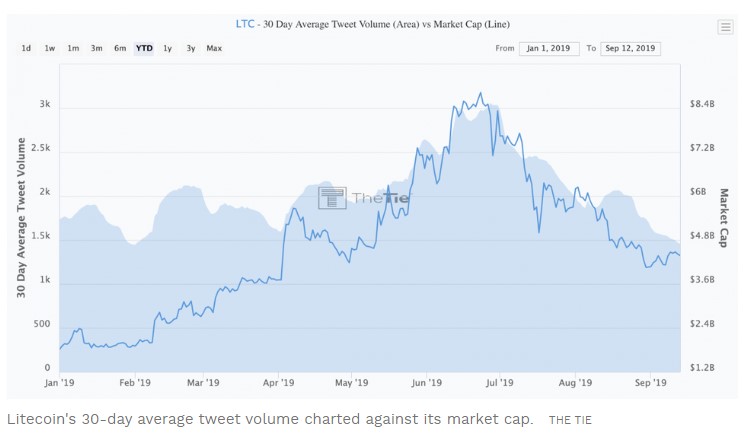Multi-currency halving approaching, is the bull market imminent?
Text: AAX team

Most digital currency investors should know that Bitcoin may be "halving" in May 2020. This is a periodic event, sometimes written as "Halvening". Historically, "halving" has often been closely linked to dramatic price increases. It's no surprise, then, that since December last year, Google searches for "half bitcoin" have surged worldwide.

- New US draft ban on cryptography could affect cryptocurrencies? Practicality is too weak
- Sony Corporation of Japan favors the digital economy and completes strategic investment in token issuance platform Securitize
- Domestic block chain policy release intensive in January: 10 ministries and commissions of the central government issued 11 documents to support 12 places in government reports
Source: Google Trends. Search term: "Half Bitcoin" is less widely known, and there are multiple currencies that will usher in "halving" in 2020:
- Ethereum Classic (ETC), March
- Bitcoin Cash (BCH), April
- Bitcoin SV (BSV), April
- Dash, May
- Small Zero Coin (XZC), September
- Big Zero Coin (ZEC), October
Although we can reasonably expect this year's price trend to become strong, the assumption that "halving" will automatically lead to a skyrocketing price obviously misses many other factors.
A sudden decrease in supply would theoretically push up the value of money. But in fact, there are more factors that determine the impact of "halving". For example, some miners may cease operations due to reduced revenue. This could jeopardize cybersecurity and lead to a sell-off. The "halving" result also depends on the currency itself and its social support structure.
The same "halving", the story is very different
"Half reduction" means that after the miner successfully adds a block to the blockchain, the block reward obtained is reduced by half. From that moment, the newly mined digital currency entering the market will decrease.
The previous article mentioned that the first "halving" of Bitcoin occurred on November 28, 2012. The year before the "halving", from November 28, 2011, the price of BTC increased by 341.90%. One year after the "halving", until November 28, 2013, the price of Bitcoin increased by a staggering 7,976%.
Similarly, the year before the second "halving", from July 2015 to July 2016, the price of BTC increased by 111%. More importantly, the price of BTC skyrocketed after "halving", and the price went up by 2866%, reaching a historical peak of $ 19,891.
Of course, historical performance cannot guarantee future repeats, and the performance of different currencies may be different. For example, if we look back on the year in which Litecoin (LTC) "halved" (August 5, 2019), we can see that the price of Litecoin follows a different trajectory.
In early 2019, the price of Litecoin began to rise, from $ 30 on January 1 to $ 141 on June 23. But after June, before the "halving", the price of Litecoin plummeted again, falling to $ 37 on December 18.
In this case, an interesting finding is that there is a correlation between Litecoin's market value and the amount of tweets associated with it. It clearly shows how the excitement caused by "halving" has driven prices up, but from a technical point of view, "halving" itself is not reflected in the price chart.
 Source: https://thetie.io/
Source: https://thetie.io/
To explain this phenomenon, some critics point out that both Bitcoin and Ethereum have a large number of loyal fans, but Litecoin cannot get the same level of community support.
With the decrease of Litecoin block rewards, miners started to give up mining. This raises concerns about network security and currency availability. Therefore, the previous price increase is likely to be driven by people's expectations of the price increase itself, that is, the self-fulfilling prophecy, rather than the direct impact of "halving".
Broader thinking
The reality of each currency may be different. When preparing for a "halving", investors must consider multiple factors, not just the mathematical logic behind the "halving" event.
Miners of Bitcoin SV (BSV) and Bitcoin Cash (BCH) BSV and BSH are currently struggling to find a balance of payments, and most are even at a loss. Some reports even claim that the current BSV is closely related to the form of "altruistic mining". The reasons that motivated these miners to continue mining despite their losses are unclear, but the two currencies do have relatively strong core supporters.
In January 2020, after BSV hovered around $ 100 for several months, it skyrocketed from about $ 90 to $ 400 in two weeks. Although BCH has risen slightly from the beginning of the year, such a surge has not occurred. In April 2020, both currencies will "halve".
Small coin
The situation with the privacy coin ZEC is slightly different. Unlike Bitcoin miners, ZEC miners earn only 80% of the block reward, and the remaining 20% is distributed to ZEC's founders, developers, and investors. The problem with ZEC's "halving" is that in addition to the block rewards will be reduced, the 20% reward allocated to the founders will also stop. This means that ZEC will soon face a gap in R & D funding, so the ZEC community is currently discussing various proposals to ensure currency continuity.
Dash
For DASH, "halving" is not actually halving. In contrast, DASH's block reward is reduced by 7.14% every 210,240 blocks (about 383 days). This makes the transition more gradual, thus providing more room for miners and investors to adjust their strategies. This strategy inspires developers to innovate continuously to drive value, rather than expecting the miracle of the protocol itself.
to sum up
As we look to the future and prepare for "halving," it's important to look at the situation for each currency separately.
For example, despite Bitcoin's good history, we must also carefully consider what the upcoming "halving" means for miners and how they will respond when the block rewards decrease. Similarly, it's best to consider that Bitcoin's high-net-worth investors or "giant whale" may embark on a "halving" expected pulldown and at what price they will be able to grab profits.
Finally, the situation has changed a lot since the last BTC "halving." First, the market has become more mature, which means that price increases may not be as extreme as before. In addition, investors now have the opportunity to predict price movements through Bitcoin contracts. This may affect the behavior of traders and the way "halving" affects the market.
If anything else, understanding how to use perpetual contracts to maximize your investment exposure and hedge your risk may be the key to your success in 2020.
We will continue to update Blocking; if you have any questions or suggestions, please contact us!
Was this article helpful?
93 out of 132 found this helpful
Related articles
- Venezuela's digital currency "experimental" encounters difficulties
- US Marshal's Bitcoin Auction: Tim Draper's Digital Kingdom
- Global assets under the "epidemic": BTC rose over 12% to become the best in the world
- Conjectures about digital wallets and central bank digital currencies
- Was arrested for false evidence? Auburn's farce is added
- Ethereum 2.0 audit report announced next week, giving green light to multi-client testnet
- Analysis of CBDC's international R & D dynamics (II): Thailand and Hong Kong join hands to open up the "second pulse of Rendu"





